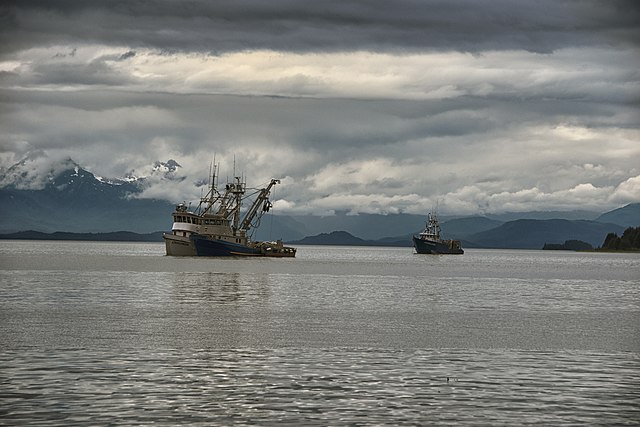As the 2025 fishing season signs off, Southeast Alaska’s pink salmon sector is on the cliff edge. This is after the Department of Fish and Game (ADFG) recorded a 20% harvest reduction from previous targets.
The Southeast and Prince William Sound fisheries have reported steep haul cuts for companies and individual fishers alike.
Among companies is Trident Seafoods, which processes and packs both pink and chum salmon. Its VP Alexis Telfer cited lowkey pinks harvests in the run up to an early September seasonal close, per the Wrangell Sentinel.
Individual fishers are not faring well either as the likely cut in production by 1/5th bodes ill for their returns.
The total Southeast catch before August 22, 2025 clocked 23 million fish, shy of the ADFG’s target of 29 million.
In retrospect, the southeastern coast had its last bumper harvest of the species in 2023 at 48 million units.
Analysts now expect the current production declines in the Southeast and the Sound to substantially impact statewide forecasts.
On May 13, 2025, the ADFG predicted pinks to lead Alaska’s salmon landings with 138.4 million fish. This is almost three times the forecast for runner-up sockeye at 52.9 million units.
Back in 2024, actual pink salmon landings were just 40 million units, just behind sockeye at 42.2 million. Only chum salmon performed worse that year after the production value fell to a two-decade low of $25,091.
The huge inter-year harvest discrepancy between pinks harvests owes to 24-month lifecycles, whereby productivity oscillates between “odd” and “even” years.
Since 2025 is the latest “even” production year since 2023, its lowkey show comes as a frustration to fishermen.
Time for Farmed Salmon?
Little wonder then that Alaska’s governor Mike Dunleavy has in late August 2025 advocated for salmon aquaculture.
The subject of farming salmon on land remains taboo in Alaska due to pressure from tough environmentalists.
Governor Dunleavy however remains adamant and begrudges the import dependence of farmed salmon from Scotland. Indeed, 85% of all seafood in the United States comes from abroad, the bulk of which from aquaculture.
Could a revert to farming fish in the northwestern U.S. state increase landings and stabilize traditionally high salmon prices? The statistics below give an icing to the cake by offering a few takeaways on Alaska’s pinks.
Alaska Pink Salmon Statistics
Pink salmon (Oncorhynchus gorbuscha) is the most bountiful salmon species in Alaska in the northwest United States. The species accounts for over 50% of the state’s annual tonnage each second year. This discrepancy owes to a 2-year lifecycle pattern, which makes one year more productive than the next. At peak season, southeast Alaska swarms with these small salmon which sail into 2,500 streams to spawn. The following landings table, courtesy of the Alaska Department of Fish and Game (ADFG) provides a clearer idea of production.
| Year | Pinks Landings [count] |
| 2010 | Over 100 million |
| 2007 | 111 million |
| 2005 | 161 million |
| 2000 | 111 million |
| Before 1993 | 70 million (100-year average) |
Where do pink salmon inhabit most in Alaska?
About 1/4 of all pink salmon landings in Alaska emanate from the Prince William Sound to the south. The ADFG’s data puts the annual landings of the species here at 26% of statewide hauls.
What are key stats of pink salmon production in the Southeast?
Despite their smallness, pink salmon in the key habitat of the Southeast weigh average 3.5 pounds, apiece. The southeast is also home to 2,500 streams in which these fish spawn each year. In production terms, the area averaged 95 million salmon a year in 2013, up from 30 million in 1960. This makes the region, together with the Sound, the main sources of the species. Regarding financial returns, the southeastern Alaska pink salmon fishery brings a maximum $124 million in ex-vessel value annually.
